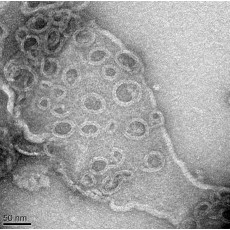New Customers Sepcial: Get 15% off, use the code "NEW15" at checkout. Shop Now!
Listeriolysin-O, LLO
LLO is a single, non-glycosylated polypeptide chain containing 529 amino acids and having a molecular mass of 58kDa (accession number: AAF64524).
1. Vaccine Development:
LLO is used as a vaccine adjuvant to enhance immune responses. It can help dstimulate both innate and adaptive immune systems, boosting the overall efficacy of vaccines. LLO is used in vaccine formulations to deliver antigens into host cells. By forming pores in the host cell membranes, LLO helps deliver antigens directly into the cytoplasm, where they can be processed and presented to the immune system, leading to a stronger immune response. LLO has been explored in Listeria-based vaccine platforms. These vaccines use live Listeria bacteria that express the target antigen and LLO, which facilitates intracellular delivery of the antigen to induce cell-mediated immunity.
2. Gene Delivery Systems:
Lipid Vesicle-Mediated Delivery: LLO is utilized in gene delivery systems to improve the transfer of DNA or RNA into cells. Its pore-forming ability helps facilitate the entry of genetic material into the cytoplasm, enabling gene therapy applications.
Gene Editing: LLO has been studied as part of CRISPR-Cas9 delivery systems. Its ability to disrupt membranes aids in the efficient transfer of the CRISPR components into target cells, enhancing gene-editing efficiency.
3. Cell Biology and Membrane Permeabilization:
Membrane Permeabilization: LLO is a powerful tool for studying membrane dynamics and lipid bilayer interactions. It is used in research to understand membrane disruption, pore formation, and membrane fluidity in model systems such as lipid bilayers or liposomes.
Intracellular Trafficking Studies: By disrupting membranes, LLO can be used to investigate how intracellular trafficking and vesicle fusion occur within cells, especially in the context of phagocytosis and endocytosis.
4. Immunotherapy:
Tumor Immunotherapy: LLO is explored in cancer immunotherapy to enhance immune responses against tumors. LLO-based immunotoxins can be designed to selectively kill cancer cells or activate immune cells to target tumor tissues.
Toxin Fusion Proteins: LLO is used in fusion proteins with other proteins or toxins to selectively deliver toxic agents to cancer cells or infected cells, exploiting its membrane-permeabilizing property to facilitate targeted killing.
5. Research on Bacterial Pathogenesis:
Pathogenesis Studies: LLO is a critical virulence factor of Listeria monocytogenes, and it is studied to understand how Listeria escapes from phagosomes and spreads within host tissues. It is used to model host-pathogen interactions and the mechanisms behind intracellular bacterial survival.
Studying Pore Formation: LLO is a representative example of pore-forming toxins (PFTs), and studying its structure and activity helps researchers understand the general mechanism of pore formation and membrane lysis by other bacterial toxins.
6. Drug Delivery and Nanomedicine:
Nanocarrier Systems: LLO has been studied as a part of nanocarrier systems for drug delivery. By incorporating LLO into lipid-based nanoparticles, it can be used to enhance the intracellular delivery of drugs, including chemotherapeutic agents or antibiotics, to increase their efficacy.
Targeted Drug Delivery: LLO can be employed in targeted drug delivery strategies where it helps to release therapeutic agents inside specific cells or tissues by forming pores that facilitate the uptake of the drugs.
TDD-1002-product-datasheet
Listeriolysin-O, Listeriolysin-O, LLO Protein.pdf
| Chemical | |
|---|---|
| Endotoxin | 1.0 EU per μg protein as determined by the LAL method |
| Purity | >96% SDS-PAGE; ≥ 98 % as determined by SEC |
| Biological | |
| Application | Moleculare delivery; Antibody production and detection |
| Biologically Active | Yes |
| Expression System | Escherichia coli |
| Organism | Listeria monocytogenes serovar 1/2a (Uniprot: P13128) |
| Protein Construction | LLO(Uniprot: P13128) expressed with c-terminal 6xHis tag |
| Protein Type | Recommbinant |
| Shipping and Handling | |
| Shipping Condition | Dry Ice |
| Storage Buffer | 20 mM Tris-HCl, pH 8.0, 150 mM NaCl |
| Storage Temperature | -80℃ for long term storage; avoid freeze / thaw cycle |



